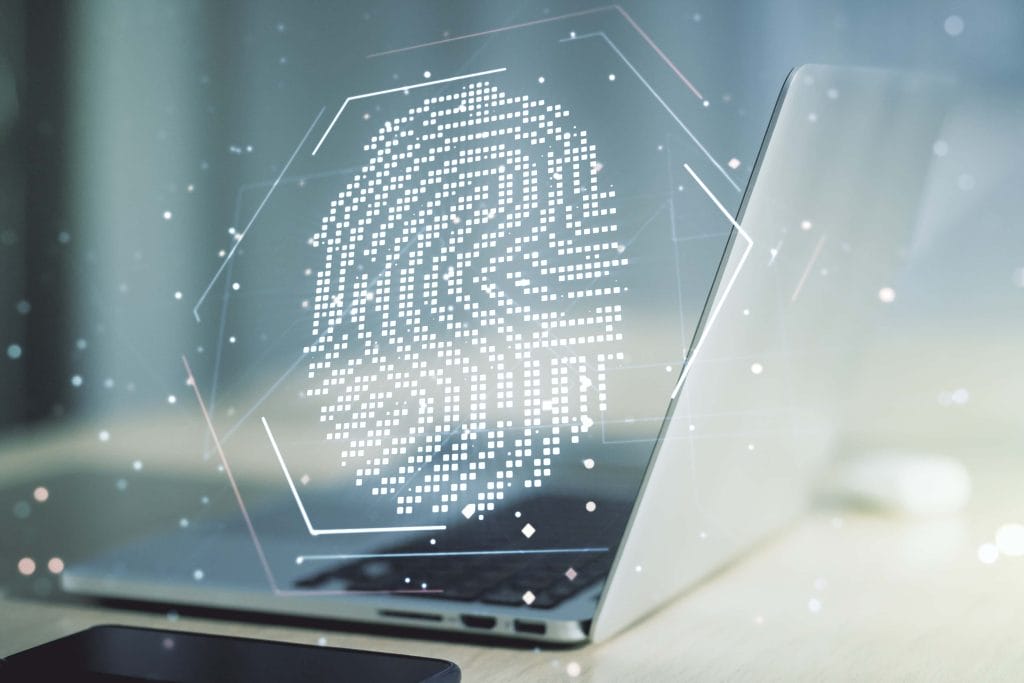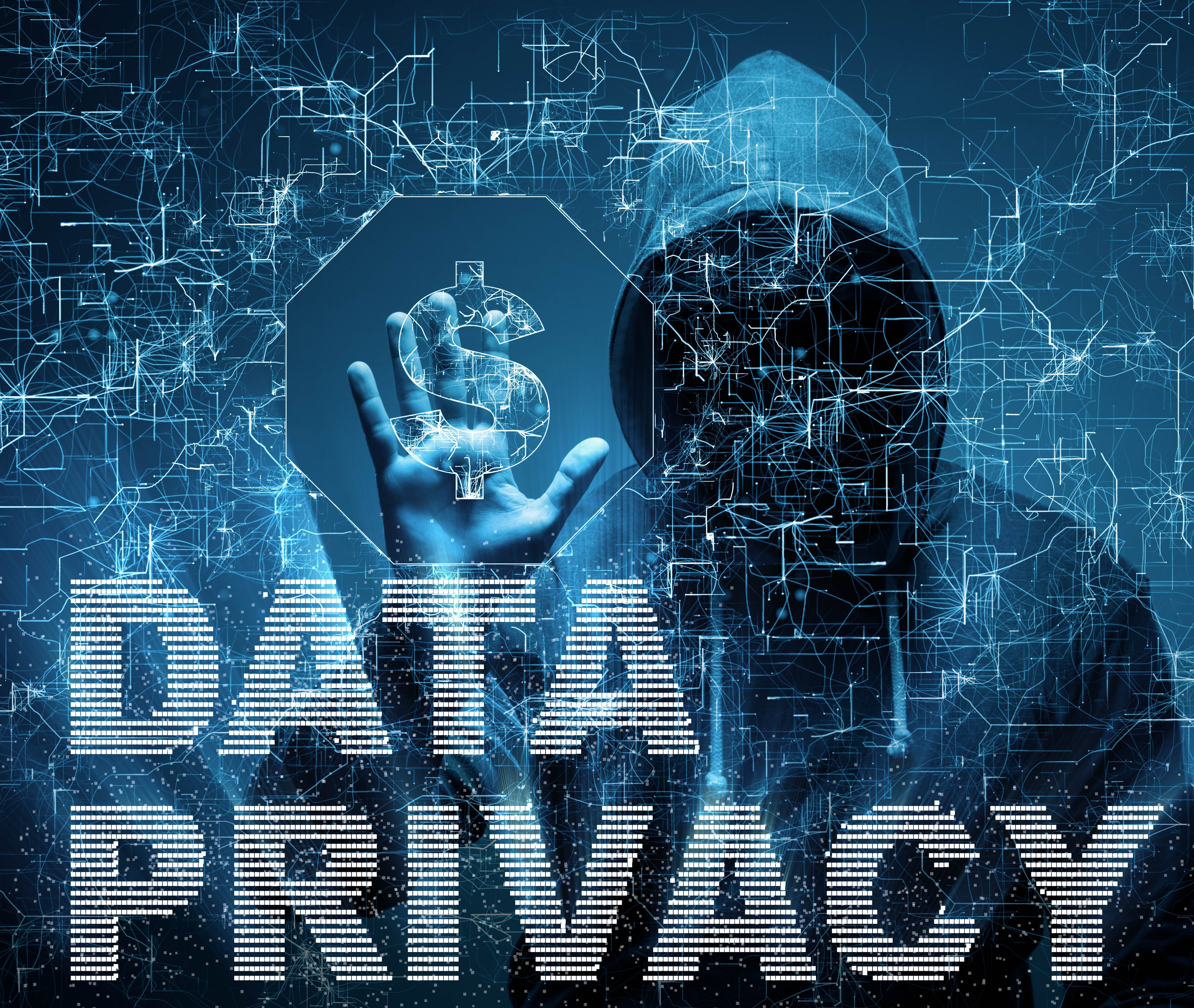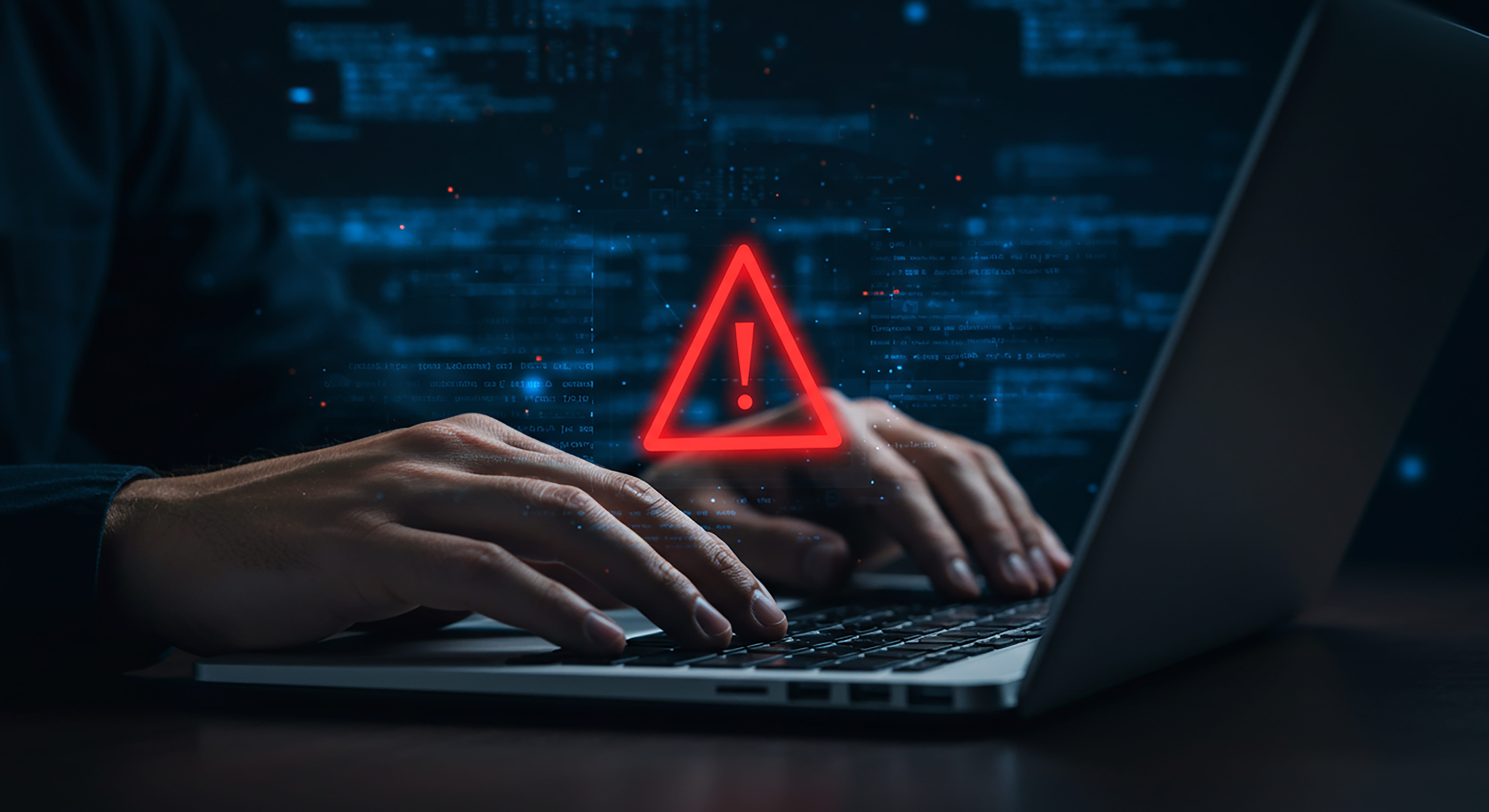What Is GRC in Cyber Security?

GRC in cybersecurity, which stands for Governance, Risk, and Compliance, involves a thorough strategy to align an organization’s security practices with its business goals, manage potential threats, and guarantee adherence to legal and regulatory requirements. Governance sets the strategic direction and oversight, risk management identifies and mitigates threats, while compliance ensures that the organization follows laws and standards like GDPR and HIPAA. Implementing GRC enhances your organization’s security posture, empowers informed decision-making, increases accountability, and avoids legal penalties. Establishing clear roles and using established frameworks, like ISO 27001, can guide you in managing complex cyber threats effectively. Keep learning to fortify your understanding.
Definition of GRC in Cyber Security
To understand GRC in cybersecurity, you need to look at its three core components: governance, risk management, and compliance.
Governance involves setting strategic directions and overseeing cybersecurity activities to guarantee alignment with business objectives.
Risk management focuses on identifying, evaluating, and prioritizing risks, while compliance confirms adherence to laws and industry standards, helping to protect against cyber threats.
Understanding Governance in Cyber Security
Establishing strong governance in cybersecurity ensures that your security measures align seamlessly with business goals and regulatory requirements. Governance in cybersecurity involves setting policies, procedures, and responsibilities to make certain that your organization’s security posture is resilient and effective. It focuses on executive management’s direction and oversight, which is pivotal for managing cyber risks effectively.
By integrating governance into your cybersecurity framework, you guarantee that strategic decisions are guided by thorough risk management and compliance considerations. This alignment helps your organization adapt to changing threats, maintain compliance with regulations, and enhance overall security resilience.
Here’s a quick comparison to highlight the importance of governance in cybersecurity:
| Aspect | Without Strong Governance | With Strong Governance |
| Risk Management | Disorganized, inconsistent | Structured, all-encompassing |
| Compliance | Frequent violations | Consistent adherence |
| Security Posture | Weak, fragmented | Strong, unified |
| Decision-Making | Reactive, ad-hoc | Proactive, strategic |
| Adaptability to Threats | Slow, ineffective | Swift, effective |
Effective governance in cybersecurity is vital for establishing a framework that guides decision-making and risk management processes. It ensures that your security strategies are well-aligned with business objectives, regulatory requirements, and evolving threat landscapes.
Risk Management in Cyber Security
Effective risk management in cybersecurity means actively identifying, assessing, and prioritizing potential threats to your organization’s essential assets. A robust risk management program guarantees that security risks are systematically identified and evaluated, enabling you to take proactive measures against cyber threats.
This process starts with a thorough risk assessment, where you analyze the likelihood and impact of various threats on your data security and overall operations. By understanding the specific vulnerabilities within your network, you can implement targeted controls to mitigate these risks. It’s vital to align your risk management practices with your business objectives, ensuring that your strategies support both security and operational goals.
Continuous monitoring and adaptation are essential, as the cyber threat landscape is constantly evolving. Your risk management program should include regular assessments and updates to stay ahead of emerging threats. This not only enhances your organization’s resilience but also safeguards critical assets and data.
Compliance in Cyber Security
While robust risk management forms the backbone of a strong cybersecurity strategy, guaranteeing adherence to regulations and standards is equally vital for protecting your organization’s sensitive data and systems. Adherence in cyber security involves following various laws, regulations, and industry standards designed to safeguard digital information.
Meeting adherence standards isn’t just about following rules; it’s about creating a secure environment that aligns with regulatory requirements. Adherence programs are the rules and procedures your organization implements to follow these standards. These programs help you stay in line with relevant laws, such as GDPR, HIPAA, and SOX, which mandate specific practices for data protection, privacy, and security.
By integrating adherence into your cybersecurity framework, you guarantee that your security measures aren’t only robust but also legally sound. Achieving adherence in cyber security means continuously monitoring and updating your practices to meet evolving regulatory requirements. This proactive approach minimizes the risk of legal penalties and data breaches, thereby enhancing your organization’s overall security posture.
Ultimately, maintaining adherence is a dynamic process that supports your broader GRC objectives, guaranteeing that your cybersecurity efforts are both effective and compliant with the necessary legal standards.
Why GRC is Crucial for Information Security
Understanding why GRC is important for information security involves recognizing how governance helps protect assets by setting strategic directions and overseeing cybersecurity activities.
It also highlights the role of risk mitigation through identifying, evaluating, and prioritizing threats, ensuring that potential risks are managed effectively.
Additionally, ensuring compliance with regulations not only helps avoid legal penalties but also builds trust with stakeholders and enhances the organization’s security posture.
The Role of Governance in Protecting Assets

Governance in GRC guarantees that your cybersecurity measures align with business objectives, effectively safeguarding your valuable information assets. By integrating governance, you ensure that your cybersecurity measures, including policies and procedures, are not only strong but also strategically aligned with your organization’s goals. This alignment is vital because it enables you to protect your critical assets while maintaining business continuity.
Effective governance frameworks within GRC empower you to make informed decisions regarding your cybersecurity initiatives. They offer a structured approach to manage and oversee the implementation of security controls, ensuring compliance with necessary regulations and standards. Governance focuses on accountability, transparency, and strategic alignment, important for the thorough protection of digital assets.
Here’s how governance in GRC impacts your organization:
| Aspect | Emotional Impact |
| Strategic Alignment | Confidence in safeguarding business objectives |
| Policy and Procedure Creation | Assurance of strong security measures |
| Accountability | Trust in accountable management |
| Transparency | Clarity in security operations |
| Informed Decision-Making | Empowerment to mitigate risks |
Risk Mitigation through GRC
Integrating GRC into your cybersecurity strategy is crucial for mitigating risks and safeguarding your information assets effectively. A robust GRC framework aligns governance, risk management, and compliance strategies, reducing the likelihood and impact of security incidents and data breaches. By implementing this framework, you guarantee that your security measures are thorough and proactive, protecting sensitive information and assets from cyber threats.
Risk mitigation is a critical component of GRC. It involves identifying, evaluating, and addressing vulnerabilities before they can be exploited. With a strong GRC framework, you can prioritize risks based on their potential impact, allowing you to allocate resources effectively and maintain a resilient cybersecurity posture. This proactive approach helps in anticipating and neutralizing threats, rather than just reacting to incidents after they occur.
Moreover, GRC ensures that you meet compliance requirements, which is crucial for avoiding legal penalties and reputational damage. Adhering to industry standards and regulations not only protects your organization but also builds trust with stakeholders.
Ensuring Compliance with Regulations
In today’s regulatory landscape, securing compliance with regulations like GDPR, HIPAA, and PCI DSS is paramount for protecting sensitive information and avoiding severe penalties. Non-compliance can lead to hefty fines, legal action, and significant reputational damage. A robust GRC framework helps you navigate these challenges by providing a structured approach to managing risks, maintaining data security, and upholding regulatory compliance.
By aligning your security practices with industry standards and best practices, a GRC framework mitigates cyber threats effectively. Implementing GRC enhances transparency, accountability, and resilience against evolving cyber threats. It guarantees your organization remains compliant with key regulations, safeguarding your data and avoiding costly consequences. Below is a table outlining some critical regulations and their primary focus areas:
| Regulation | Focus Area |
| GDPR | Data protection & privacy |
| HIPAA | Health information security |
| PCI DSS | Payment card security |
| SOX | Financial reporting |
A well-implemented GRC framework not only aids in securing compliance but also fortifies your organization’s overall security posture. It helps you systematically identify, assess, and prioritize risks related to data security. In doing so, you can better protect your organization from cyber threats, ensuring that your sensitive data remains secure and compliant with all relevant regulations.
Benefits of Implementing GRC in Cyber Security
When you implement GRC in cybersecurity, you benefit from enhanced risk management, as it allows you to identify, assess, and mitigate threats more effectively.
You’ll also achieve improved regulatory compliance, ensuring your organization meets legal and industry standards and avoids costly penalties.
Additionally, GRC streamlines governance processes, aligning security measures with business objectives and improving overall organizational efficiency.
Enhanced Risk Management
Adopting a GRC framework significantly enhances your organization’s ability to identify, assess, and prioritize security risks effectively. By integrating GRC in cyber security, you can manage risk more efficiently through a thorough risk management framework. GRC helps in pinpointing cybersecurity risks before they escalate into significant threats. This proactive approach ensures that your organization can take timely and informed actions to mitigate potential dangers.
Here’s how GRC enhances risk management in your organization:
- Identification: GRC tools help you uncover hidden vulnerabilities and potential threats, providing a clear picture of your cybersecurity risk landscape.
- Assessment: With a structured framework, you can evaluate the severity and impact of identified risks, helping to prioritize them based on their potential impact.
- Prioritization: GRC enables you to rank risks, ensuring that the most critical threats are addressed first, aligning with your business objectives.
- Mitigation: By implementing GRC, you can develop and execute strategic plans to control and reduce risks, strengthening your overall security posture.
In essence, GRC in cyber security not only helps manage risk but also aligns your security strategies with broader business goals, resulting in better decision-making and enhanced organizational resilience.
Improved Regulatory Compliance
Implementing GRC in cybersecurity guarantees your organization meets regulatory standards and industry best practices, reducing the risk of non-compliance. By employing an effective GRC strategy, you can systematically address compliance risk, making certain that your organization is always maintaining compliance with regulations like GDPR, HIPAA, PCI DSS, and SOX. This structured approach helps you meet compliance requirements more efficiently, protecting your organization from potential penalties and fines that could arise from regulatory breaches.
A solid GRC framework doesn’t just help you reduce the risk of non-compliance; it also aligns your cybersecurity measures with regulatory guidelines, enhancing data protection and privacy. This alignment fosters trust with customers, partners, and regulatory bodies, showcasing your organization’s commitment to safeguarding sensitive information. Additionally, maintaining compliance through GRC ensures that your cybersecurity practices are up-to-date with evolving laws and standards, which is essential in the ever-changing landscape of cyber threats.
Ultimately, an effective GRC strategy streamlines the process of meeting compliance requirements, allowing your organization to focus on core business activities without the constant worry of regulatory scrutiny. This not only secures your operations but also enhances your overall reputation in the marketplace.
Streamlined Governance Processes
By integrating GRC into your cybersecurity framework, you streamline governance processes, aligning security initiatives with your business goals and promoting cohesive and effective decision-making.
An effective GRC program not only provides a structured approach to cybersecurity governance but also enhances your organization’s ability to manage risks and comply with regulations effectively.
The GRC framework helps organizations by establishing clear roles and responsibilities, enabling better decision-making and operational performance. This streamlined approach ensures that your cybersecurity risk management program is tightly integrated with overall business strategies, leading to more resilient and adaptable security measures.
Consider the following benefits:
- Enhanced Visibility: A unified GRC framework provides detailed insights into security initiatives, making it easier to identify and address potential threats.
- Improved Decision-Making: By aligning cybersecurity governance with business objectives, decision-makers can prioritize actions that best support organizational goals.
- Increased Efficiency: Streamlined governance processes reduce duplications and enhance the coordination of security efforts across various departments.
- Regulatory Compliance: An effective GRC program guarantees that your organization meets all necessary legal and industry standards, minimizing the risk of non-compliance penalties.
Steps to Integrate GRC into IT Security
To integrate GRC into IT security, you must first assess your current security posture to identify strengths and weaknesses, ensuring alignment with business objectives.
Next, select appropriate GRC tools that offer functionalities like risk analytics, workflow management, and audit tracking to support thorough oversight.
Assessing Current Security Posture
Before diving into GRC integration, you need to thoroughly assess your current security posture, identifying existing measures, weaknesses, and potential risks. This initial step is essential for formulating a strategic plan that aligns with your business goals and improves your cybersecurity measures.
Start by conducting a detailed risk assessment to understand where your organization stands. This involves evaluating your current security posture, identifying gaps, and prioritizing risks.
Here’s how you can do it:
- Inventory existing security measures: Document your current tools, technologies, and processes. This helps in understanding what safeguards are already in place.
- Identify vulnerabilities: Analyze your system for weaknesses that could be exploited by cyber threats. This may include outdated software, misconfigurations, or lack of proper access controls.
- Assess potential risks: Determine the likelihood and impact of various threats. This involves understanding both internal and external risks, such as insider threats or cyber-attacks from malicious entities.
- Develop a strategic plan: Based on the findings, create a roadmap for GRC integration. This plan should focus on mitigating identified risks and aligning your security measures with organizational objectives.
Selecting Appropriate GRC Tools
Selecting the suitable GRC tools starts with comprehending your specific IT security needs and how they align with GRC functionalities. Begin by conducting a thorough risk assessment to identify the vulnerabilities within your existing IT infrastructure. This will help you pinpoint the areas where a GRC tool can add value through its compliance management and governance capabilities.
Look for tools that offer robust risk assessment features, enabling you to evaluate and prioritize risks effectively. Governance capabilities are pivotal as well, as they help in setting strategic directions and overseeing cybersecurity activities. Compliance management features guarantee that your organization adheres to relevant laws and industry standards, minimizing legal and financial risks.
Integration capabilities are another key factor. A GRC tool should seamlessly integrate with your existing systems, providing real-time monitoring and reporting functionalities. This integration guarantees that data flows smoothly between your current IT security measures and the new GRC framework, enhancing overall efficiency.
Consider scalability and ease of use when selecting a GRC tool. The tool should be adaptable to your organization’s growth and easy for your team to use, ensuring a smooth shift and effective implementation.
Implementing GRC Best Practices
Having the right tools in place sets the stage for effectively implementing GRC best practices in your IT security framework. To begin, align your security measures with the overall business objectives and goals. This alignment guarantees that your GRC strategy supports the organization’s mission and enhances decision-making.
Establish Clear Roles and Responsibilities: Define specific roles and responsibilities across your organization, ensuring that everyone understands their part in the GRC process. Clear delineation helps in maintaining accountability and streamlines operations.
Conduct Regular Gap Analysis: Regularly perform gap analysis to identify discrepancies between your current security measures and the required standards. This proactive approach helps in recognizing potential vulnerabilities and areas needing improvement.
Address Compliance Issues Promptly: Prioritize and address compliance issues as soon as they arise. By promptly mitigating risks, you guarantee that the organization remains compliant with legal and regulatory requirements, thereby avoiding penalties and potential breaches.
Implement Robust Security Measures: Implement thorough security measures that adhere to industry best practices. This includes regular updates, patches, and monitoring to safeguard against emerging threats.
GRC Frameworks and Best Practices

To effectively manage cybersecurity, you should consider implementing established GRC frameworks such as COBIT, ISO 27001, and the NIST Cybersecurity Framework.
These frameworks provide thorough guidelines to align your security measures with business objectives, ensuring robust governance, risk management, and compliance.
COBIT Framework
The COBIT framework offers a strong set of best practices and guidelines that align IT processes with business objectives to enhance governance, risk management, and compliance. By implementing COBIT, you can secure effective GRC, which is important for maintaining a strong cybersecurity posture.
COBIT focuses on optimizing IT processes to achieve strategic business goals while ensuring regulatory adherence and mitigating risks.
To help you understand the key components of the COBIT framework, here’s a breakdown:
- Governance and Compliance: COBIT provides a structured approach to establishing and maintaining IT governance, making sure that your IT strategies are aligned with business objectives.
- Risk Management and Compliance: The framework assists in identifying, evaluating, and managing IT risks, ensuring that compliance requirements are met effectively.
- Cybersecurity Governance: COBIT helps set up governance structures that oversee and guide cybersecurity activities, ensuring that security measures are aligned with organizational goals.
- Effective GRC: COBIT’s maturity models enable you to evaluate current GRC practices, identify gaps, and implement improvements to enhance overall cybersecurity resilience.
ISO 27001 Standards
ISO 27001 offers a thorough framework for establishing and improving your organization’s information security management system, guaranteeing strong protection against cyber threats. By adopting ISO 27001, you can create a systematic approach to managing sensitive company information, focusing on identifying and mitigating risks through a detailed risk assessment process.
This standard emphasizes the importance of implementing effective security controls tailored to your specific organizational needs. These controls help in protecting data integrity, confidentiality, and availability, thereby safeguarding your business from potential cyber threats. Additionally, ISO 27001 encourages continuous monitoring and periodic review of your information security practices, ensuring they remain effective and relevant in an ever-evolving threat landscape.
Achieving ISO 27001 certification demonstrates your commitment to information security, which can greatly enhance your organization’s credibility and trustworthiness in the eyes of customers and partners. It shows that you have a robust system in place to manage and protect information assets, aligning your security measures with business objectives and regulatory requirements.
Incorporating ISO 27001 into your GRC strategy not only strengthens your cybersecurity posture but also guarantees compliance with relevant laws and standards, fostering a culture of continuous improvement and resilience against emerging threats.
NIST Cybersecurity Framework
When you’re looking to strengthen your cybersecurity strategy, consider the NIST Cybersecurity Framework for its structured, all-encompassing approach. This framework is designed to help organizations manage and improve their cybersecurity risk management. By using the NIST Cybersecurity Framework, you can align your cybersecurity efforts with your business objectives and industry best practices.
The framework revolves around five core functions:
- Identify: This function involves understanding your business context, the resources that support critical functions, and the related cybersecurity risks. It’s essential for establishing a risk management strategy.
- Protect: Implement safeguards to ensure critical services can be delivered, focusing on access control, data security, and protective technology.
- Detect: Develop and implement activities to identify the occurrence of cybersecurity events promptly. This includes continuous monitoring and detection processes.
- Respond: Create and implement response plans to address detected cybersecurity incidents, mitigating their impact.
- Recover: Focus on resilience and the ability to restore services affected by cybersecurity incidents, ensuring timely recovery.
Using the NIST Cybersecurity Framework, you can integrate effective cybersecurity governance, deploy risk assessment tools, and enhance GRC in cybersecurity, providing a thorough approach to managing risks and aligning with regulatory requirements.
Best Practices for GRC Implementation
When implementing GRC in cybersecurity, consider examining case studies of successful GRC programs to understand practical applications and benefits.
You’ll also want to focus on tips for effective GRC integration, such as fostering collaboration between departments and utilizing automated tools to streamline processes.
These practices can help guarantee your GRC implementation is both efficient and aligned with your organization’s goals.
Case Studies of Successful GRC Implementation
Several companies have achieved remarkable results by adopting best practices in GRC implementation, showcasing tangible benefits such as reduced risks and increased compliance.
For example, Company X experienced a 30% reduction in cybersecurity risks after implementing an all-encompassing GRC program. This successful GRC strategy helped them manage and mitigate potential threats effectively.
Similarly, Organization Y improved its compliance with industry regulations by 40% through an effective GRC implementation. By adhering to regulatory standards and optimizing their security posture, they enhanced their overall resilience.
Company Z also saw significant benefits from their GRC efforts. Their successful GRC integration led to a 25% increase in operational efficiency and risk mitigation. This improvement not only streamlined their processes but also fortified their defenses against cybersecurity risks.
Lastly, Company A witnessed a 50% reduction in security incidents and breaches by following GRC best practices. This outcome underscores the importance of a robust GRC framework in minimizing vulnerabilities and ensuring continuous protection.
Here’s a snapshot of these successful GRC implementations:
- Company X: 30% reduction in cybersecurity risks.
- Organization Y: 40% improvement in compliance.
- Company Z: 25% increase in operational efficiency.
- Company A: 50% reduction in security incidents.
Tips for Effective GRC Integration
To effectively integrate GRC into your cybersecurity strategy, start by conducting a thorough gap analysis to identify areas needing improvement. This initial step is vital for pinpointing weaknesses and understanding where your current practices fall short in addressing cybersecurity threats.
Once you’ve identified these areas, implement a centralized platform to streamline governance, risk management, and compliance processes. A centralized platform guarantees that all GRC activities are coordinated, making it easier to monitor and manage them efficiently.
Guarantee effective communication between IT, security, and compliance teams to facilitate seamless GRC integration. Clear and consistent communication helps align goals and ensures that everyone is on the same page regarding policies and procedures.
Regularly monitor and update your GRC policies and procedures to adapt to evolving cybersecurity threats and changing regulations. This proactive approach minimizes risks and guarantees ongoing compliance.
Additionally, provide continuous training and awareness programs for your employees. Educating your staff about the importance of GRC in cybersecurity practices fosters a culture of compliance and risk awareness, empowering them to act as the first line of defense.
The Future of GRC in Cyber Security

The future of GRC in cybersecurity relies on leveraging automation and AI to streamline processes and enhance risk management capabilities. You’re looking at a landscape where cyber risk management becomes more efficient through automation and integration, coupled with AI and machine learning. These technologies will enable you to analyze vast amounts of data quickly, providing proactive threat intelligence to identify and mitigate risks before they escalate.
To paint a clearer picture, consider these advancements:
- Streamlining and Integration: Simplifying tasks like compliance checks and risk assessments will free up your resources for more strategic activities.
- AI and Machine Learning: These will help you forecast potential vulnerabilities and automate responses to identified threats.
- Proactive Threat Intelligence: By utilizing real-time data, you’ll be able to anticipate and counteract emerging threats more effectively.
- Collaboration Between GRC and Cybersecurity: Enhanced communication and joint efforts will lead to a more thorough security strategy, reducing silos and fostering a unified approach.
Incorporating these elements into your GRC framework won’t only enhance your cybersecurity posture but also guarantee you’re prepared for future challenges.
Encouragement for Adoption of GRC
By embracing a GRC framework, you’ll align your cybersecurity efforts with business objectives and regulatory requirements, promoting a proactive approach to risk management. This alignment guarantees that your cybersecurity governance isn’t only robust but also integrated seamlessly into your organization’s overall strategy.
Integrating GRC enhances your decision-making processes by providing a structured approach to risk management and compliance. You’ll be able to identify, assess, and prioritize risks more effectively, guaranteeing that your organization can address potential threats before they escalate into serious issues. Compliance with regulatory requirements becomes more manageable, reducing the likelihood of costly penalties and reputational damage.
Promoting the adoption of GRC also cultivates a culture of accountability and transparency within your cybersecurity practices. This cultural shift leads to improved operational efficiency and a more resilient security posture. By implementing GRC, you’re not just meeting regulatory mandates—you’re building a comprehensive framework that supports continuous improvement and adaptation in the face of evolving cyber threats.
Ultimately, GRC adoption minimizes security risks, enhances operational efficiency, and ensures compliance with relevant laws and industry standards, positioning your organization to effectively navigate the complex landscape of cybersecurity challenges.
Frequently Asked Questions
What Does a Cyber GRC Do?
You align your organization’s security measures with business goals. You identify and prioritize risks, implement controls, and guarantee compliance with laws and standards. Your work enhances decision-making and strengthens security resilience against threats.
What Is a GRC Used For?
You use GRC to integrate governance, risk management, and compliance into your cybersecurity strategy. It helps you manage risks, guarantee regulatory compliance, and streamline operations, ultimately enhancing your organization’s security resilience and overall performance.
What Is the Role of GRC in Security?
GRC in security helps you manage risks, guarantee compliance, and align security efforts with business goals. By integrating policies and processes, you can enhance decision-making, streamline operations, and effectively mitigate potential threats.
What Is the Difference Between GRC and Security?
You’re asking about the difference between GRC and security. GRC aligns business goals with compliance and risk management, while security focuses on implementing controls to protect against cyber threats. GRC provides the strategic framework for security efforts.
Conclusion
By adopting a GRC framework, you’ll enhance your organization’s cybersecurity posture, effectively manage risks, and guarantee compliance with regulations. This approach provides a thorough view of your security landscape, enabling informed decision-making and robust protection against evolving cyber threats.
Implementing GRC not only streamlines processes but also mitigates potential threats, guaranteeing a resilient and secure environment.










